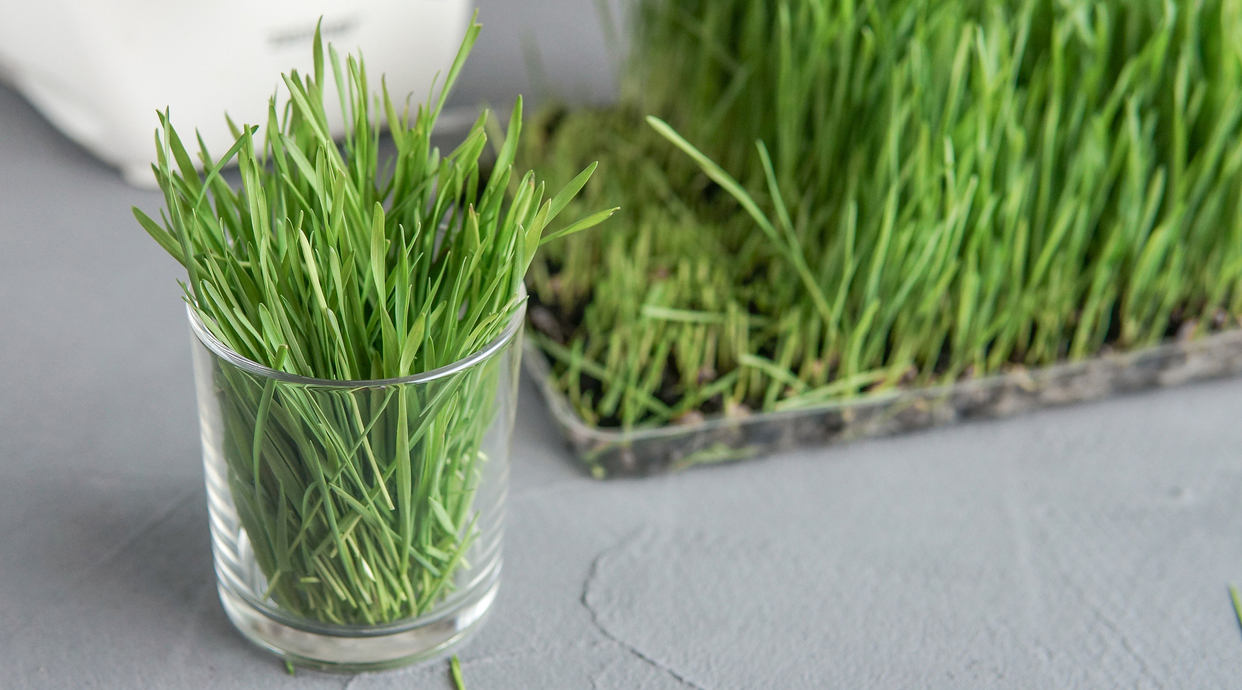Wheatgrass

Health Power
Wheatgrass juice or powder is a great low-calorie addition to the diet. It gives substantial vitamin C, iron and phytonutrients with little risk of adverse effects and a high potential for benefit. Within alternative medicine, wheatgrass has its strong proponents who tout its strength and versatility as a remedy. Some say wheatgrass gives them energy (by increasing metabolism), helps improve oxygen delivery to the cells (due to chlorophyll acting like hemoglobin in blood), boosts their immune system, helps improve skin conditions and wound healing (when drunk and applied topically), inhibits cancer cell development (especially liver cancer from the chlorophyll content), treats ulcerative colitis (inflammation of the colon), treats arthritis, prevents tooth decay (by holding in the mouth for 5 minutes), relieves constipation, detoxifies the blood (through high antioxidant behavior), decreases blood pressure and improves digestion. Little research has been done to support these statements. Still, give it a try and see how it makes you feel.
Vitamin and Mineral Content
Vitamins – C and traces
Minerals – Iron and traces
Disease Prevention
Drinking a shot of wheatgrass juice regularly may provide relief from or prevent the onset of rheumatoid and osteoarthritis, asthma, ulcers, heart disease, eczema, psoriasis and liver cancer. The American Cancer Society says it knows of no scientific evidence that wheatgrass can cure cancer or any disease after its onset. Wheatgrass, with its beneficial nutrients, may help alleviate symptoms and prevent the onset of many conditions.
How to Grow
Growing wheatgrass is easy. It prefers a partly shady location, good air circulation and a temperature range of 60-75˚F. This makes it an ideal candidate for indoor growing and some outdoor growing in the spring and fall. Get a growing tray and organic wheat seed from a local nursery. Soak seeds for 12 hours in a container throughout the day before planting. Rinse the seeds well and let them drain overnight. The next day, put about an inch of soil mixed with planting mix in the growing tray, dampening it by spraying it lightly as you spread the soil. Spread the wheatgrass seed on top of the soil. Water the tray with a spray bottle or a flexible spray hose from the sink. Cover the tray with an unbleached paper towel or another perforated lid (like an upside down growing tray) and spray the towel. Keep damp for 3-4 days. Generally, water once in the morning and once at night for the seed to germinate. When the seedlings reach a height of 1.5 inches, remove the paper towel or other cover and place in indirect sunlight. Temperature, humidity and air circulation will determine how frequently to water. Look underneath the tray. If the bottom is wet, do not water. A temperature of 60-75˚F. is best. Harvest the wheatgrass as needed when it reaches 6-7 inches tall. Cut just above soil level and any sign of mold. Store the tray in a cool place to preserve it longer. You can juice the cuttings, dry and crush them to make powder or blend with water and strain out the foliage.
Insect Control
Insects are not usually a problem for wheatgrass, especially if grown inside. Good air circulation and warm temperatures help prevent mold forming.
Tips
Keep the wheatgrass seed moist to achieve good germination.





